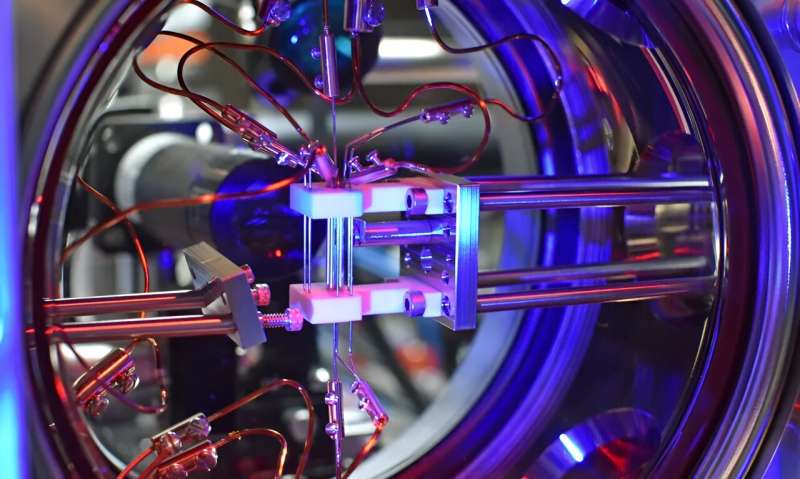Nano-oscillator hits record quality factor

In their latest study, a team led by Tracy Northup at the Department of Experimental Physics unveils the successful creation of a levitated nanomechanical oscillator with an ultra-high quality factor, significantly surpassing previous experimental achievements. The study has been published in Physical Review Letters.
The team managed to levitate a silica nanoparticle in a linear Paul trap under ultra-high vacuum conditions. What makes this achievement particularly notable is the exceptionally low dissipation rate recorded, with a quality factor exceeding 10 billion. This is more than a hundred-fold improvement compared to prior attempts, marking a milestone in the exploration of nanomechanical systems.
The team achieved this in an environment with extremely low pressure, a critical factor in reducing interactions with the surrounding air, which would otherwise damp the oscillator’s motion.
The ultra-high quality factor—a measure of how little energy is lost to the surroundings—was calculated based on the damping rate and the frequency of the nanoparticle’s oscillations.
The oscillator’s unprecedented stability and low noise levels make it an ideal platform for the development of ultrasensitive detectors and for conducting fundamental tests in quantum physics. It opens up exciting possibilities for exploring quantum phenomena in macroscopic systems, which has been a long-standing challenge in the field.
More information:
Lorenzo Dania et al, Ultrahigh Quality Factor of a Levitated Nanomechanical Oscillator, Physical Review Letters (2024). DOI: 10.1103/PhysRevLett.132.133602. On arXiv: DOI: 10.48550/arxiv.2304.02408
Provided by
University of Innsbruck
Citation:
Nano-oscillator hits record quality factor (2024, March 29)
retrieved 29 March 2024
from https://phys.org/news/2024-03-nano-oscillator-quality-factor.html
This document is subject to copyright. Apart from any fair dealing for the purpose of private study or research, no
part may be reproduced without the written permission. The content is provided for information purposes only.

